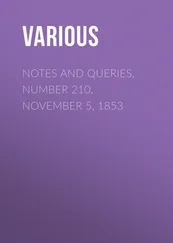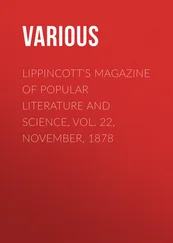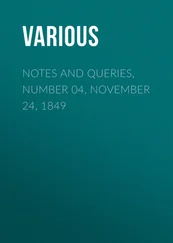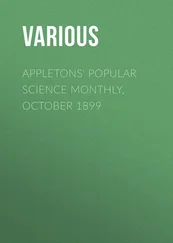Various - Appletons' Popular Science Monthly, November 1898
Здесь есть возможность читать онлайн «Various - Appletons' Popular Science Monthly, November 1898» — ознакомительный отрывок электронной книги совершенно бесплатно, а после прочтения отрывка купить полную версию. В некоторых случаях можно слушать аудио, скачать через торрент в формате fb2 и присутствует краткое содержание. Издательство: Иностранный паблик, Жанр: periodic, foreign_edu, на английском языке. Описание произведения, (предисловие) а так же отзывы посетителей доступны на портале библиотеки ЛибКат.
- Название:Appletons' Popular Science Monthly, November 1898
- Автор:
- Издательство:Иностранный паблик
- Жанр:
- Год:неизвестен
- ISBN:нет данных
- Рейтинг книги:5 / 5. Голосов: 1
-
Избранное:Добавить в избранное
- Отзывы:
-
Ваша оценка:
- 100
- 1
- 2
- 3
- 4
- 5
Appletons' Popular Science Monthly, November 1898: краткое содержание, описание и аннотация
Предлагаем к чтению аннотацию, описание, краткое содержание или предисловие (зависит от того, что написал сам автор книги «Appletons' Popular Science Monthly, November 1898»). Если вы не нашли необходимую информацию о книге — напишите в комментариях, мы постараемся отыскать её.
Appletons' Popular Science Monthly, November 1898 — читать онлайн ознакомительный отрывок
Ниже представлен текст книги, разбитый по страницам. Система сохранения места последней прочитанной страницы, позволяет с удобством читать онлайн бесплатно книгу «Appletons' Popular Science Monthly, November 1898», без необходимости каждый раз заново искать на чём Вы остановились. Поставьте закладку, и сможете в любой момент перейти на страницу, на которой закончили чтение.
Интервал:
Закладка:
Various
Appletons' Popular Science Monthly, November 1898 / Volume 54, November 1898
WAS MIDDLE AMERICA PEOPLED FROM ASIA?
The controversies over the question of the origin of Central American culture are to be again awakened by the exploration organized under the direction of the American Museum of Natural History through the liberality of its president, Morris K. Jesup, Esq. The plans embrace an ethnographic survey of the races between the Columbia and Amoor Rivers. Many similarities in customs, folklore, etc., will doubtless be found among these northern races. How far traces of an ancient avenue will be established through which came the unique cult of middle America, and for which in a way the surveys have been instituted, remains to be seen. The question is one of perennial interest, and all honor to the scientific spirit of Mr. Jesup, whose munificence has provided the means for this work.
It may be of interest to remind those who have only a vague idea of the contention that there are many earnest scholars who insist that the wonderful architectural remains in Mexico, Yucatan, and other regions of the west coast are due to Asiatic contact in the past. As proofs of this contact are cited similarities as seen in the monuments, the facial characteristics of certain tribes, ancient customs, astronomical ideas, serpent worship, certain games, etc. Particularly is it believed by the scholars that the "land of Fusang" mentioned in early Chinese historical records is no other than Mexico or some contiguous country.
Space will not permit even the briefest mention of the evidences which have led to these conclusions, and the reader is referred to a remarkably condensed history of the whole question embodied in a volume by Mr. Edward P. Vining entitled An Inglorious Columbus. Under this unfortunate title one may find the most painstaking collocation of the many memoirs written upon this subject, with the Chinese account of the land of Fusang in Chinese characters, and appended thereto the various translations of the document by De Guines, Williams, Julien, and other eminent sinologues.
To the French Orientalist, M. de Guines, we are indebted for our first knowledge of certain ancient records of the Chinese, which briefly record the visit of Chinese Buddhist monks to the land of Fusang in the year 458 of our era, and the return of a single Buddhist monk from this land in 499. De Guines's memoir appeared in 1761, and for forty years but little attention was drawn to it. Humboldt says that, according to the learned researches of Father Gaubil, it appears doubtful whether the Chinese ever visited the western coast of America at the time stated by De Guines. In 1831, Klaproth, the eminent German Orientalist, combated the idea that Fusang was Mexico, and insisted that it was Japan. In 1844 the Chevalier de Paravey argued that Fusang should be looked for in America. Prof. Karl Friedrich Neumann also defended this idea. In magazine articles in 1850-1862, and finally in book form in 1875, Mr. C. G. Leland supported with great ingenuity the idea of Chinese contact based on the Fusang account. In 1862 M. José Perez also defended the idea. In 1865 M. Gustave d'Eichthal published his memoir on the Buddhistic origin of American civilization, and in the same year M. Vivien de Saint-Martin combated the theory, and since that time many others have written upon the subject in favor or in opposition to the idea of Asiatic contact.
These hasty citations are only a few of the many that I have drawn from Mr. Vining's encyclopedic compilation.
It is extraordinary what a keen fascination the obscure paths of regions beyond history and usually beyond verification have to many minds, and the fascination is as justifiable as the desire to explore unknown regions of the earth. In the one case, however, we have a tangled mass of legendary tales coming down from a time when dragons were supposed to exist, when trees were miles in height, when people lived to a thousand years, when every unit of measurement was distorted and every physical truth, as we know it to-day, had no recognition, while in the other case we have at least a continuity of the same land and sea extending to the unexplored beyond. This impulse of the human mind finds an attractive problem in the question as to the origin of the American races. Dr. Brinton has insisted on the unreasonable nature of the inquiry by asking an analogous one: "Whence came the African negroes? All will reply, 'From Africa, of course.' 'Originally?' 'Yes, originally; they constitute the African or negro subspecies of man.'" By bringing together isolated features which have resemblances in common, the American Indian has been traced to nearly every known stock. Mr. Henry W. Henshaw, in an admirable address entitled Who are the American Indians? says: "If you have special bias or predilection you have only to choose for yourself. If there be any among you who decline to find the ancestors of our Indians among the Jews, Phœnicians, Scandinavians, Irish, Welsh, Egyptians, or Tartars, then you still have a choice among the Hindu, Malay, Polynesian, Chinese, or Japanese, or indeed among almost any other of the children of men." Had this address been written a few years later he might have added Hittite!
There are two propositions involved in the controversy as to the Asiatic origin of the American race: the one is that America was peopled from Asia by invasions or migrations in pre-savage or pre-glacial times; the other is that the peculiar civilization of Central America was induced by Buddhist monks, who traveled from Asia to Mexico and Central America in the fifth century of our era. Those who sustain the first thesis are without exception men trained in the science of anthropology; those who sustain the second thesis are with a few conspicuous exceptions travelers, geographers, sinologues, missionaries, and the like.
If Asia should ever prove to be the cradle of the human race, or of any portion of it which had advanced well beyond the creature known as Pithecanthropus erectus , then unquestionably an Asian people may be accounted the progenitors of the American Indians. Any effort, however, to establish an identity at this stage would probably take us far beyond the origin of speech or the ability to fabricate an implement.
The controversy has not raged on this ground, however; the numerous volumes and memoirs on the subject have dealt almost exclusively with culture contacts or direct invasions from Asia in our era, and more particularly with the supposed visits of Chinese Buddhist monks to Mexico and Central America already alluded to. Believing in the unity of the human race, the dispersion of the species seems more naturally to have occurred along the northern borders of the great continents rather than across the wide ocean. From the naturalist's standpoint the avenues have been quite as open for the circumpolar distribution of man as they have been for the circumpolar distribution of other animals and plants down to the minutest land snail and low fungus. The ethnic resemblances supposed to exist between the peoples of the two sides of the Pacific may be the result of an ancient distribution around the northern regions of the globe. Even to-day social relations are said to exist between the peoples of the Mackenzie and the Lena delta, and it is not improbable that the carrying band of the Ainu in Yeso and a similar device depicted on ancient codices and stone monuments in Mexico may have had a common origin. Advancing to a time when man acquired the art of recording his thoughts, the question of any contact between the peoples of the eastern and western shores of the Pacific, south of latitude 40°, compels us to examine the avenues which have been so potent in the distribution of life in the past – namely, the oceanic currents. We are at once led to the great Japan current, the Kuro Shiwo, which sweeps up by the coast of Japan and spends its force on the northwest coast of America. Records show a number of instances of Japanese junks cast ashore on the Oregon coast and shores to the north. [1] Mr. Charles Walcott Brooks presented to the California Academy of Sciences a report of Japanese vessels wrecked on the North Pacific Ocean in which many instances are given. He says: "Every junk found stranded on the coast of North America or on the Hawaiian or adjacent islands has, on examination, proved to be Japanese, and no single instance of a Chinese vessel has ever been reported, nor is any believed to have existed… There also exists an ocean stream of cold water emerging from the Arctic Ocean which sets close in along the eastern coast of Asia. This fully accounts for the absence of Chinese junks on the Pacific, as vessels disabled off their coast would naturally drift southward."
Интервал:
Закладка:
Похожие книги на «Appletons' Popular Science Monthly, November 1898»
Представляем Вашему вниманию похожие книги на «Appletons' Popular Science Monthly, November 1898» списком для выбора. Мы отобрали схожую по названию и смыслу литературу в надежде предоставить читателям больше вариантов отыскать новые, интересные, ещё непрочитанные произведения.
Обсуждение, отзывы о книге «Appletons' Popular Science Monthly, November 1898» и просто собственные мнения читателей. Оставьте ваши комментарии, напишите, что Вы думаете о произведении, его смысле или главных героях. Укажите что конкретно понравилось, а что нет, и почему Вы так считаете.












